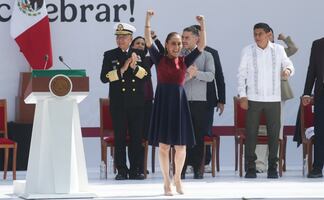Even as Mexico saw its largest one-day death toll , yesterday Mexico City announced it will begin a gradual reopening on June 1.
With around 9 million residents, Mexico City is one of the world’s largest cities. Authorities predicted the pandemic is nearing its peak in Mexico City, but hospitals in the capital are already about three-quarters full. As of May 19, the city reported more than 15,000 confirmed COVID-19 cases and nearly 1,500 deaths.
Despite the critical situation, Mayor Claudia Sheinbaum said Mexico City will begin a gradual reopening on June 1, when some sectors of the economy will be allowed to resume their operations.
The Mayor said Mexico City will remain on the most critical stage on its scheme to resume activities on June 15; however, some public places and sectors will reopen on June 1.
Sheinbaum said schools could reopen in August.
While Sheinbaum called on residents to continue implementing physical distancing measures until June 15, impatience with isolated at home, financial troubles, and a lack of any enforcement already drew more and more people back into the streets in recent weeks.
More customers clustered at the city’s famous street food stands and traffic has picked up. The city never shut down its subway system , which millions depend on for transportation.
Sheinbaum’s reopening plan included some of the industries that the federal government already approved to return to work like construction, but also add bicycle sales and beer production.
Recommended: Mexico overtakes China's COVID-19 death toll
The mayor said bike shops are being exempted because she wants to promote bicycle use as a way to help improve the health of city residents.
Sheinbaum has acknowledged that the number of deaths in Mexico City is surely higher, but says an independent panel will have to review suspected cases and decide. Death records reported by an anti-corruption watchdog group suggested the death toll could be three times as high in the city.
The city’s gradual reopening will be based on its hospital occupancy , which currently stands at 76%.
“The trend continues increasing, but we hope this trend will decrease in the coming weeks,” Sheinbaum said.
The rest of the city’s economic activity won’t be allowed to resume until hospital occupancy drops below 59%. Even then, restaurants, hotels, and churches will be limited to 30% of their capacity. Sports will resume without fans.
After June 15, the city is expected to establish graduated work schedules, and partially reopen restaurants, hotels, religious services, movie theaters, among other businesses.
As the spread of COVID-19 decreases in Mexico City, authorities will allow more businesses to reopen.
Once the city reaches the “green light” on a scheme that indicates when activities are allowed to resume, authorities will allow all businesses to resume their activities as normal. Sheinbaum said the city could arrive at this stage by August.
Recommended: COVID-19: Mexico City and the metropolitan area are a ticking time bomb
gm
Noticias según tus intereses
[Publicidad]
[Publicidad]














